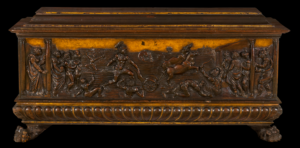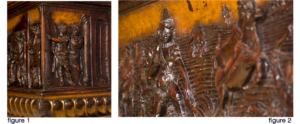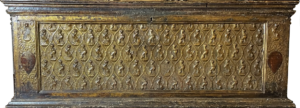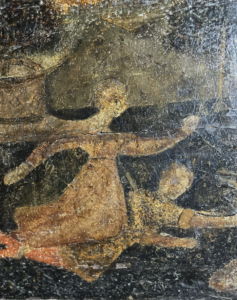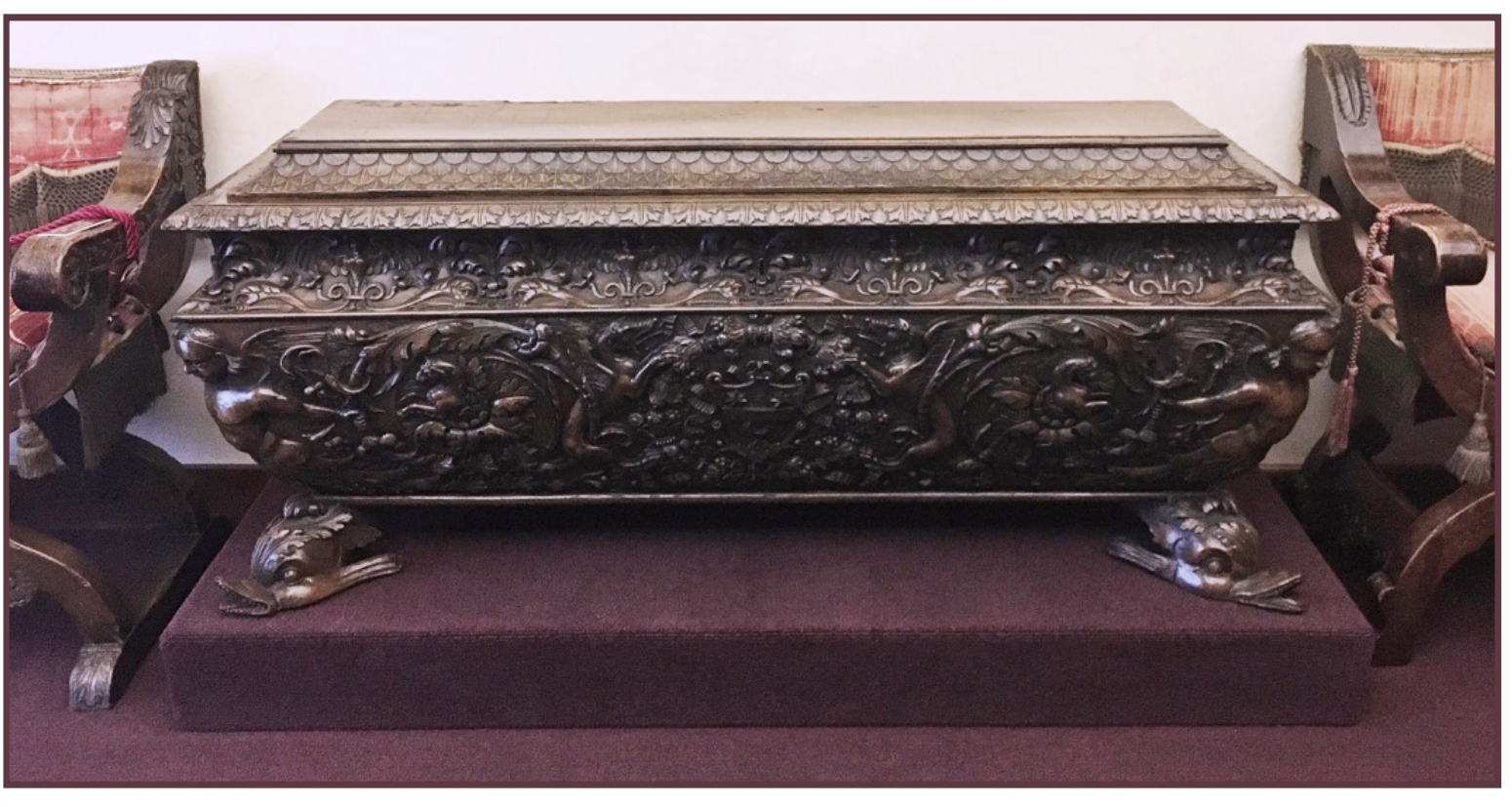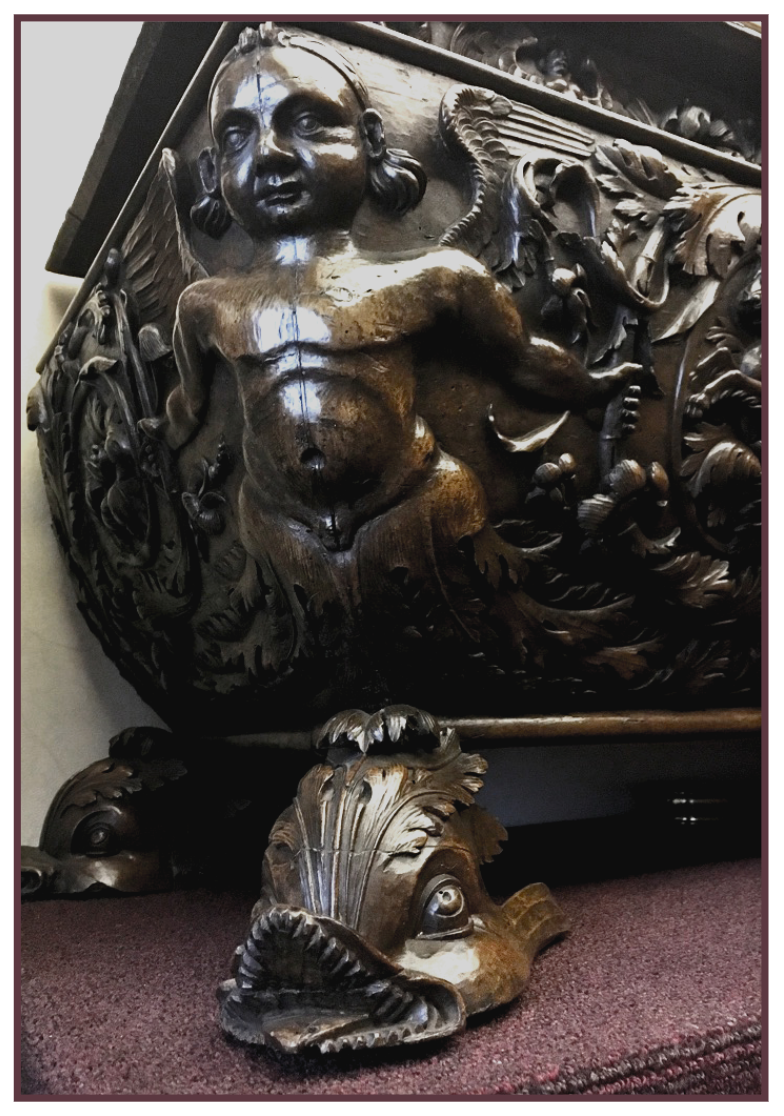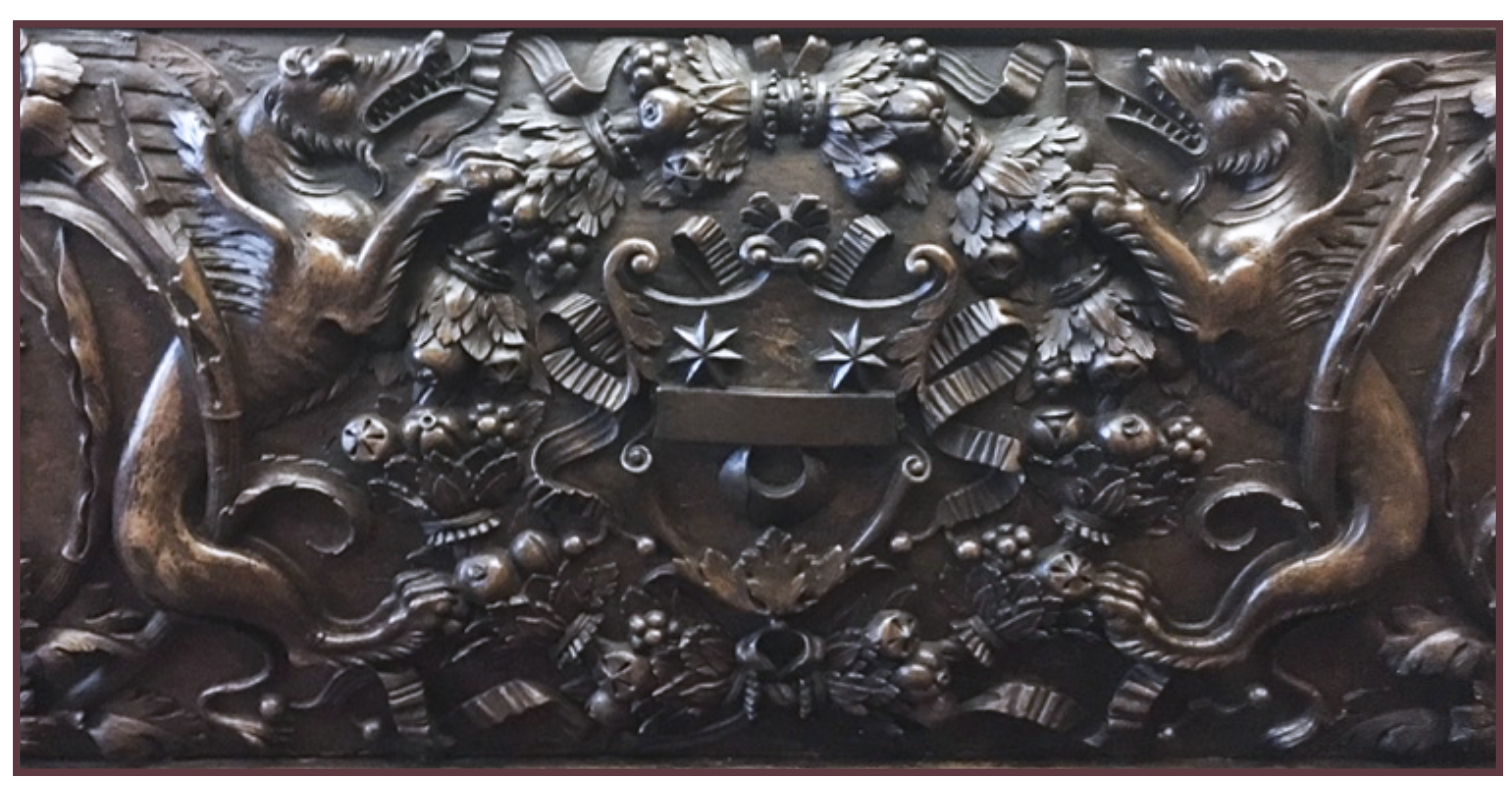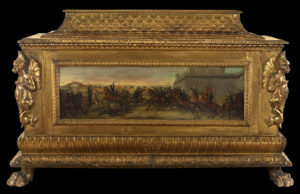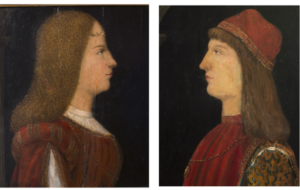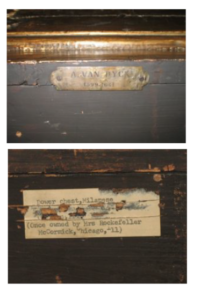Cassone
Walnut with parcel gilt
Tuscan, 16th century
While the Museum & Gallery is most widely known for its collection of religious Old Master paintings, the founder of the museum also developed “supplemental collections of period furniture, icons, decorative arts, textiles, and objects of art” (Drama & Beauty: Great European Paintings from the Bob Jones Collection). The original intent of these sub-collections was to provide a setting for the artwork that would allow modern viewers to understand and appreciate the religious and domestic contexts in which the paintings might first have been displayed.
By the 1970s notable authorities of furniture considered these once-ancillary collections to rival some of the world’s best. Joseph Aronson, who wrote a number of authoritative histories of furniture, “considered the Renaissance furniture collection the finest in America” and lent his expertise to write a catalog containing Furniture in the Bob Jones University Collection, which was published in connection with M&G’s 25th anniversary celebration in 1976.
Specifically, this Italian Renaissance walnut and parcel-gilt Cassone epitomizes the history, breadth, and educational value of M&G’s period furniture collection. Purchased for the collection in 1966, the Cassone came from French & Company, in New York City. Founded in 1907, French & Company was once considered one of the world’s largest dealers and had provided art, furnishings, and even interior design to some of the best-known families of America’s Gilded Age, including the Vanderbilts, Astors, Gettys, Rockefellers, Mellons, and duPonts (and subsequently in the collections of the major museums endowed by those families). The company thrived under its first two generations of leadership and was noted for its library of documentation, which provided purchasers with exhaustive histories (or provenance) of the items acquired. The company was then sold several times, and much of its remaining stock was auctioned in 1968. M&G is pleased to provide a home for a number of French & Company pieces.
The history of cassoni dates back to the fourteenth century. Originally functioning as wedding chests for new couples—and paraded through the streets in wedding procession—cassoni often contained the bride’s dowry and became cherished treasures in newly established homes. The decoration of cassoni grew in sophistication over the years and entire workshops were devoted to the artform. Frequently portraying Biblical, classical, or mythological subject matter, the front panels of these chests displayed any number of craftsmanship, from carving and gilding to built-up gesso decoration and painting. Even notable artists such as Sandro Botticelli, Paolo Uccello, and Donatello applied their skills to decorate cassoni for the wealthiest clientele.
M&G’s Cassone likely dates from 16th-century Tuscany and is constructed of carved walnut. Standing on diagonally-set lion paws, the chest’s special features include gilded gadrooning, the detailed and deeply-set carving on the front and side panels, as well as the ogee dome molding. The unique top paired with the end panels shifts the most intricately carved subject matter to the front of the chest and only the front two-thirds of each side (figure 1). This technique differs from the usual appearance of cassone, which are most often depicted at the foot of a couple’s bed in Renaissance art. It’s likely that this particular cassone was commissioned to solve a specific architectural challenge in its new home—possibly resting in the shallow recess of a wall or passageway. As such, it is not typical of the traditional traveling chest, but represents “a step in the evolution of the credenza form” (Aronson).
Also of interest, the remarkably dimensional, carved frieze (figure 2) has been variously explained as a battle scene or a depiction of Death riding an ox-drawn chariot through a sacrificial scene. The key clues in the frieze include bystanders observing the action from the safety of colonnades on the left and right. Most prominently on the front left is a woman holding a round vessel and a man who appears to be strangling a sheep held aloft in front of him. The front right draws the viewer’s focus to a king, surrounded by an entourage. The central figure in the scene is indeed a man on an ox-drawn chariot, riding through a plain, which is covered by furrows and ridges. Near him are 5 warriors with weapons drawn. More difficult to see in the distance above him on the plain (moving from left to right) are a ridged-back dragon, a tree, and a walled city on a hill.
Since cassoni often depict a felicitous message for newlyweds, using classical, biblical, or mythological imagery, deciphering the elements is a fascinating undertaking. In the case of this M&G cassone, newlyweds are reminded of the exploits and love contained in the story of Jason and Medea. While there are many Greek and Roman variations of the story, the key elements remain.
Jason’s father was the rightful king of Iolcus, but was overthrown by his half-brother, Pelias. Jason’s life was saved by his mother, who sent him away to be protected and educated by the centaur Chiron. When Jason returned and wished to re-take the throne, Pelias required that he undertake a quest to find and return the Golden Fleece from where it lay in Colchis. After a series of adventures Jason and the crew of his ship Argo (hence the collective name Argonauts) arrived in Colchis, where Jason requested the fleece from King Aietes. Aietes agreed to give Jason the Golden Fleece if he accomplished three feats of bravery intended to be deadly to Jason. Unknown to the king, his daughter, Medea, was charmed to fall in love with Jason and help him survive and succeed.
First, Aietes required that Jason plow a field with fire-breathing oxen, but Medea gave him an ointment to protect him from the flames. Jason next had to sow the field with dragon’s teeth. When he did so, the teeth turned into full-grown warriors (spartoi). They would have killed Jason, had he not been told how to defeat them. He threw a stone into their midst and the confused warriors, not knowing who had thrown the stone, attacked each other.
Finally, Jason had to retrieve the Golden Fleece from where it hung on an oak in the sacred grove of Ares. The grove was protected by an undying, unsleeping dragon. Here again Medea protected Jason by administering an herbal potion that made the dragon sleep. Finally, the hero and his love Medea flee from her father and return to take the Iolcus throne from Jason’s uncle. Unfortunately, their happiness was short-lived; but that part of the couple’s story is—understandably—not portrayed by the artisan of this very special Cassone.
Dr. Stephen B. Jones, M&G volunteer
Sources
Aronson, Joseph. Furniture in the Bob Jones University Collection. 1976.
Drama & Beauty: Great European Paintings from the Bob Jones Collection. Museum & Gallery, Inc. in association with D. Giles Limited, 2022.
Published 2024
